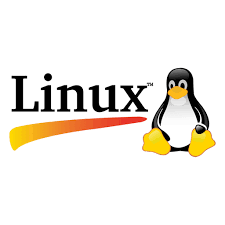Introduction
The Linux operating system has emerged as a powerful and versatile platform that has revolutionized the world of computing. Born out of the ideals of open-source development, Linux has grown to become a key player in various domains, from servers and embedded systems to desktop computing. In this article, we will explore what is Linux ?, its history, key features, and its impact on the world of technology.
What is Linux?
Linux is an open-source, Unix-like operating system kernel initially created by Linus Torvalds in 1991. The term “Linux” is often used to refer to the entire operating system, which includes the Linux kernel as well as the GNU utilities and libraries, forming a complete operating system commonly known as GNU/Linux.
Key Features of Linux
-
Open Source Philosophy: One of the defining characteristics of Linux is its open-source nature. The source code is freely available, allowing users to view, modify, and distribute their versions of the operating system. This has fostered a collaborative and transparent development environment.
-
Multiuser and Multitasking: Linux is a multiuser system, meaning multiple users can interact with the system simultaneously. Additionally, Linux supports multitasking, enabling multiple processes to run concurrently. This feature is crucial for servers and other high-performance computing environments.
-
Stability and Reliability: Linux is known for its stability and reliability. Many servers worldwide rely on Linux due to its ability to operate for extended periods without requiring a reboot. This is particularly important for critical systems where downtime is not an option.
-
Security: Linux has a robust security model with features like user-based permissions, access controls, and a strong emphasis on user privilege management. Regular security updates and patches contribute to the overall resilience of the system against cyber threats.
-
Portability: Linux is highly portable and can run on a wide range of hardware architectures, from small embedded devices to powerful servers. This portability contributes to its widespread adoption in diverse computing environments.
-
Package Management: Linux distributions come with package management systems that simplify the installation, update, and removal of software. Package managers ensure that software dependencies are satisfied, making it easier for users to manage their systems.
History of Linux
The story of Linux begins in 1991 when Linus Torvalds, a Finnish computer science student, released the first version of the Linux kernel. Linus invited collaboration from the open-source community, leading to the rapid development of the operating system. The collaboration with the Free Software Foundation and the GNU project played a crucial role in shaping Linux as a complete and functional operating system.
Impact and Usage
Linux has become the backbone of the internet, powering a significant portion of web servers. It is the operating system of choice for servers due to its stability, security, and performance. Moreover, Linux is prevalent in embedded systems, mobile devices, and cloud computing environments.
Many popular Linux distributions, such as Ubuntu, Debian, Fedora, and CentOS, cater to different user preferences and needs. These distributions package the Linux kernel with various software packages, providing users with ready-to-use systems.
Conclusion
In conclusion, the Linux operating system has evolved from a small personal project to a global phenomenon, influencing the way we approach computing. Its open-source nature, stability, security, and versatility make it a preferred choice for a wide range of applications. As technology continues to advance, Linux remains at the forefront, embodying the collaborative and innovative spirit of the open-source community.













